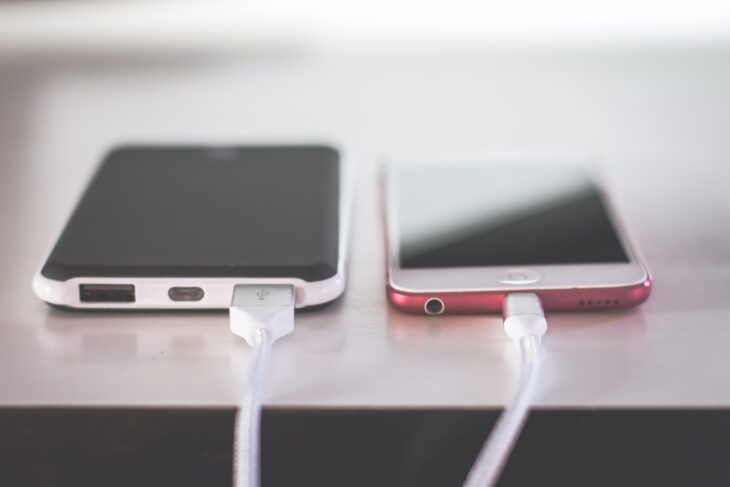Many modern electronics, from cell phones and laptops to electric cars, rely on a rechargeable lithium-ion battery power source. As the demand for batteries has increased, so has the demand for lithium. However, earth’s supply of lithium, a naturally occurring metal, is limited. Scientists have been exploring alternative renewable energy sources to decrease our reliance on lithium batteries.
A battery has three main components: a conductive material, called an electrolyte, that is sandwiched between a positively charged end, called a cathode, and a negatively charged end, called an anode. When the battery is powering a device, charged atoms, called ions, move through the electrolyte from the anode to the cathode. When the battery is being recharged, the ions flow in the opposite direction, from the cathode to the anode.
Scientists have studied sodium as a possible replacement for lithium in rechargeable batteries. Sodium is an attractive candidate because it is found everywhere on earth. However, a sodium ion is over 25% larger than a lithium ion. This slight size difference can lead to volume changes in the battery as sodium ions move from one end to the other. Sodium is also less conductive than lithium.
To overcome these limitations, scientists are designing cathode and anode materials with enhanced electrical properties. They determined that a type of material that combines two different semiconductors, called a heterostructure, would make a promising anode. The part of a heterostructure where the two semiconductors meet is called the interface and has been found to produce a strong electric field.
Recently, scientists in China designed a unique heterostructure material as a potential anode for sodium ion batteries. They produced the heterostructure from nickel sulfide and iron sulfide through a multistep process. First they synthesized iron-based nanoparticles. Then they coated these particles with a thin layer of nickel hydroxide, referred to as a nanosheet. The resulting particle had an iron core and a nickel shell. Then the scientists infused the particles with sulfur in a furnace at 400°C (about 750°F) for 2 hours. The resulting product was a nickel sulfide/iron sulfide nanoparticle with a rippled surface that the authors described as a “nanoflower”.
The scientists studied the arrangement of the atoms in the nanoflowers using a high powered microscope called a high resolution transmission electron microscope. They determined the locations of interfaces in the heterostructure by the changes in spacing between atomic layers. They mapped the elements in the sample to confirm that sulfur, iron, and nickel were evenly distributed.
Next the scientists investigated the nanoflower’s sodium storage properties. For the material to operate as a battery anode, it would need to store sodium ions as electric voltage decreases and expel the ions as voltage increases. Inside the electron microscope, the scientists observed sodium ions being inserted between atomic layers as voltage decreased. As the voltage neared zero, the sodium bonded entirely with the sulfide, creating sodium sulfide with pure nickel and iron. The scientists then increased the voltage, and as the sodium was expelled from the material, the atoms rearranged back into the heterostructure. This proved a highly reversible discharge process, which is necessary for a battery anode to store ions while the battery is being charged and to release ions when powering a device.
The scientists studied this process over many cycles of voltage increases and decreases using a process called cyclic voltammetry. Their experiment therefore mimicked a battery being charged and discharged many times. They confirmed the nanoflower-based anode delivered a high amount of electric charge over 1000 cycles and only lost about 0.26% of its charge capacity per cycle. The amount of electric charge the nanoflower-based structure delivered was also about 30% higher than that delivered by an anode made only from nickel sulfide or iron sulfide.
Using a quantum mechanical model called density functional theory, the scientists compared the electrochemical performance of nickel sulfide/iron sulfide heterostructure to both pure nickel sulfide and pure iron sulfide. They showed that the hybrid heterostructure required the lowest energy for sodium ions to move through, especially at the interface. It also had enhanced electrical conductivity compared to the pure metal sulfides.
By creating a unique iron sulfide/nickel sulfide nanoflower, the scientists in this study found a promising anode material for sodium ion batteries. They demonstrated the nanoflower-based structure could successfully store sodium ions while a battery was being charged and that the battery performance lasted over many cycles. The scientists suggest future work should include designing other materials with heterostructures and exploring different applications for these materials.


